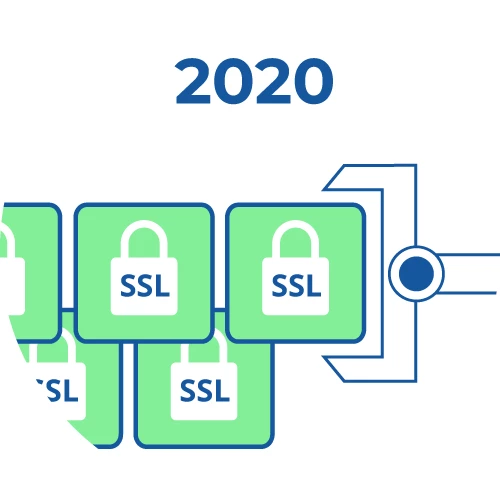The History of HAProxy
For over 20 years, HAProxy has been one of the industry’s most successful open source projects. It’s been continuously tested and improved by a massive and active open source community. See how HAProxy evolved into an essential part of the world’s technology infrastructure.

Zprox
Testing tool developed to gauge how an application would perform when facing lots of clients with 28 Kbps modems

Zprox
Modified to include regex-based header rewriting, with a minimalistic config language.
Keywords introduced: listen, server

HAProxy 1.0
Developed to offload traffic from hardware load balancers

HAProxy 1.1
Simple round-robin scheduler
Simple health checks
Improved its logging capabilities
Cookie insertion

HAProxy 1.2
IPv6 support on the client side
Replaced the wait-queue linked list with a rbtree
Introduced maxconn setting
Keywords introduced: except, forwardfor

HAProxy 1.3
Elastic Binary Trees within the internal scheduler
TCP scripting
Explicit source port ranges
Interface binding

HAProxy 1.4
RDP protocol support with server stickiness and user filtering
Client-side Keep-Alive
HTTP authentication support
ACL-based persistence

HAProxy 1.5
SSL and compression
Data sampling
Server-side Keep-alive
DDoS protection

HAProxy 1.6
Lua Scripting
Server-side connection multiplexing
Dynamic buffer allocation
Replaced Zlib with an in-house stateless implementation

HAProxy 1.7
HAProxy Runtime API
Server hot reconfiguration
SPOE (Stream Processing Offload Engine)
Introduced content processing agents & multi-type certs

HAProxy 1.8
Improved HAProxy Runtime API
Introduced multithreading
Dynamic Cookies
New MUX layer

HAProxy 1.9
HTX – internal HTTP representation
End-to-End HTTP/2 (enabling gRPC)
Improved queue priority control
Improved the scalability of the multithreading feature

HAProxy 2.0
Cloud-native theading and logging
HAProxy Kubernetes Ingress Controller
HAProxy Data Plane API
Prometheus exporter
HAProxy 2.1
Dynamic SSL Certificate Updates
FastCGI
Improved debugging
Native Protocol Tracing

HAProxy 2.2
Fully Dynamic SSL Certificate Storage
Improved idle connection management
Native Response Generator
Health Check System Overhaul
HAProxy 2.3
Syslog Protocol (UDP/TCP)
OpenTracing (SPOE)
SSL/TLS Environments
Improved Cache

HAProxy 2.4
HTTP/2 WebsocketsFIX & MQTT Protocols
Dynamic SSL Certificate Storage
Built-in OpenTracing
DNS TCP Resolution
Today, HAProxy is the world’s fastest and most widely used software load balancer. It’s responsible for providing high availability, security, and observability to some of the world’s highest-trafficked websites. Explore our User Spotlight Series to learn how the world’s top architects and engineers chose to implement HAProxy within their application architectures.